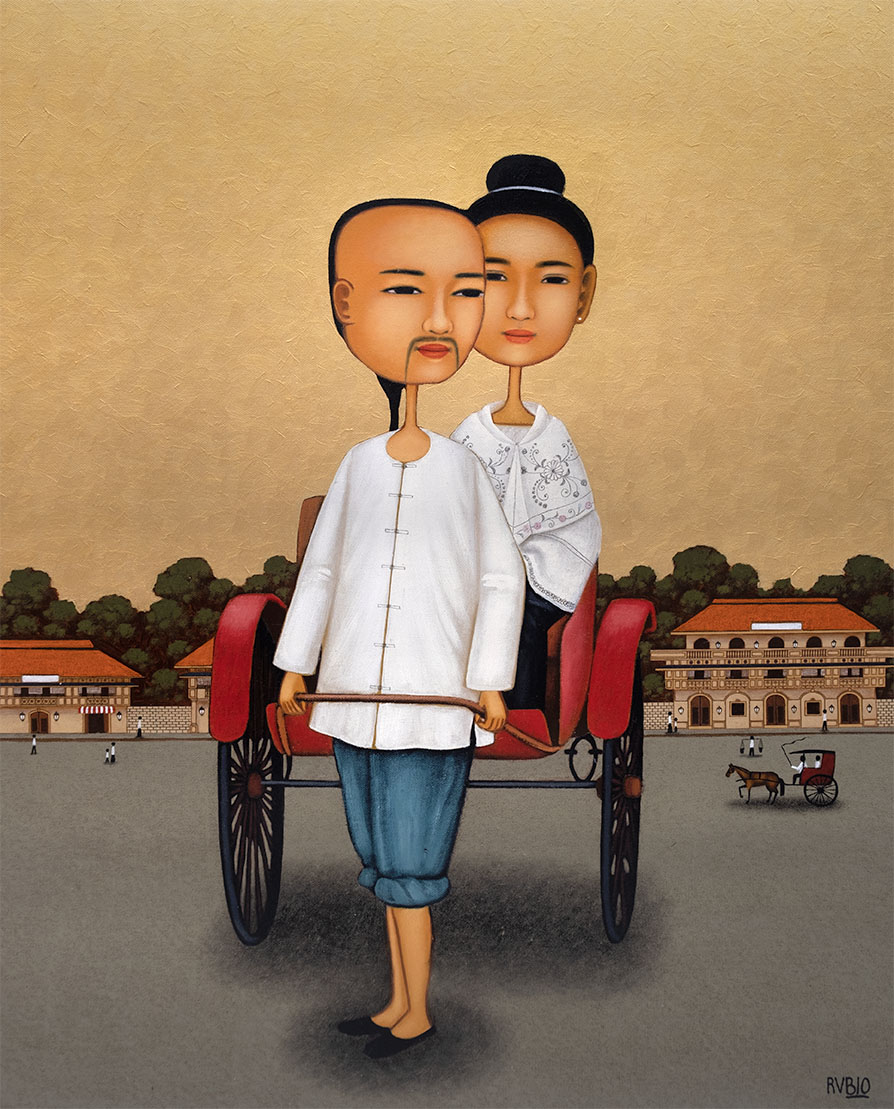

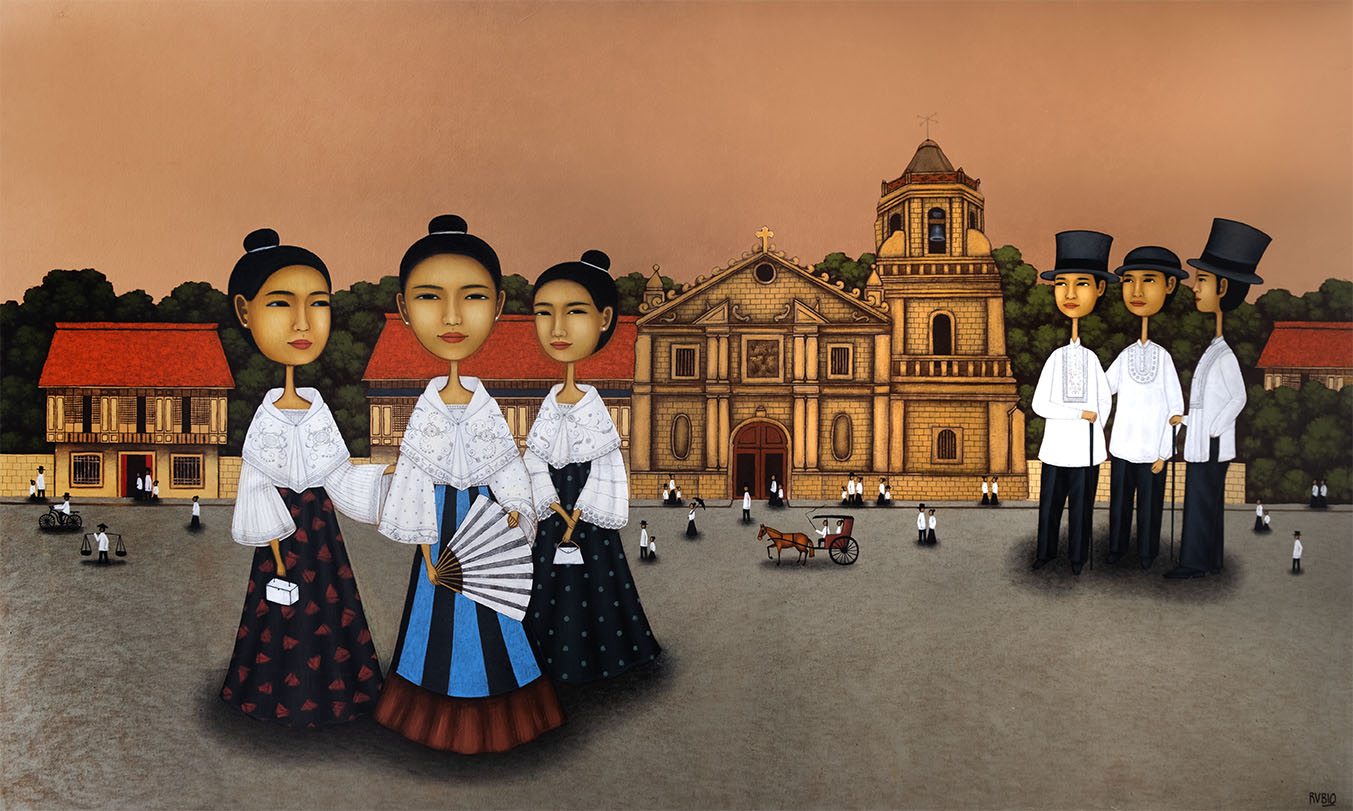
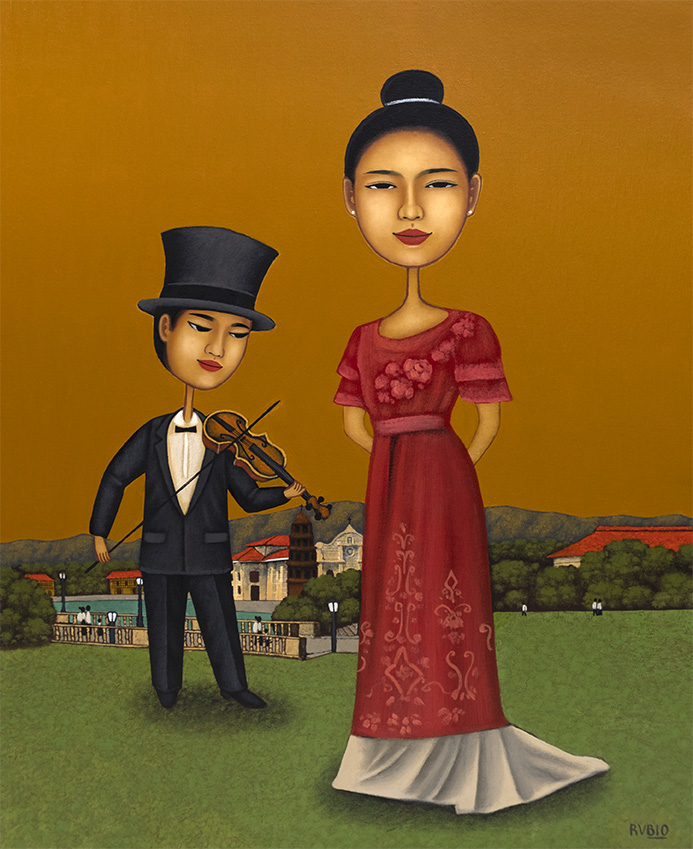
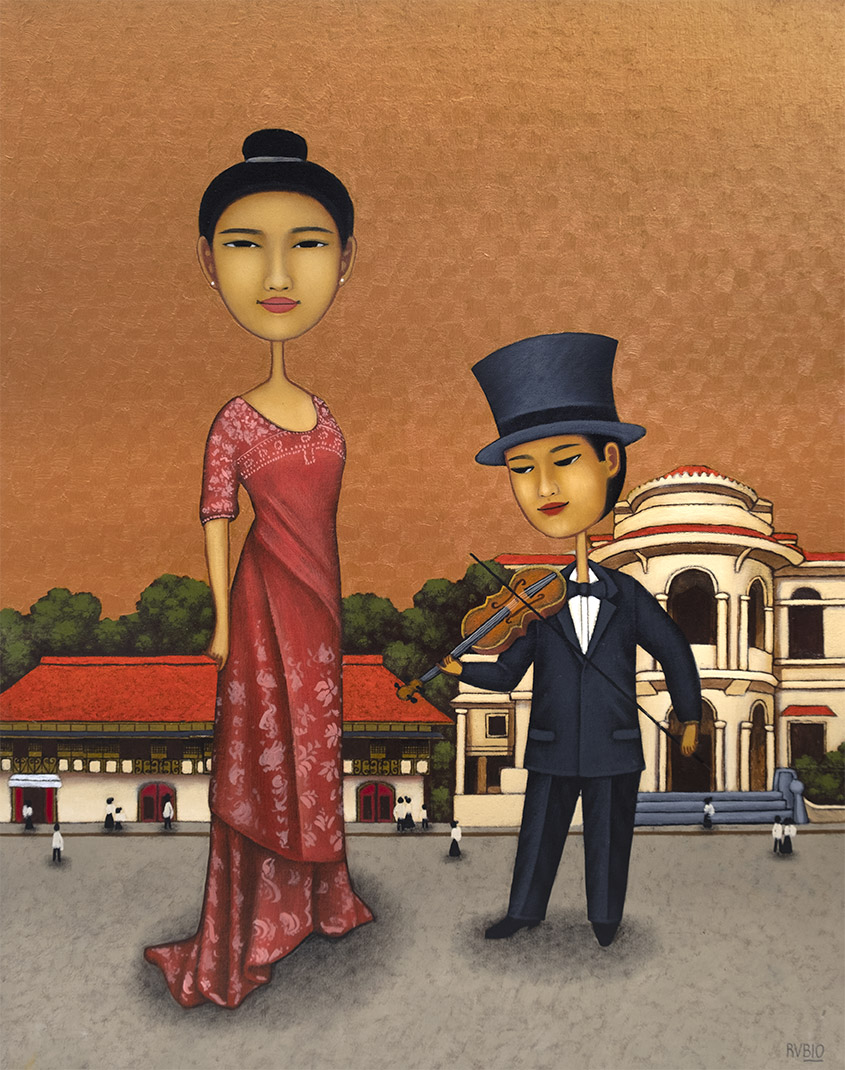
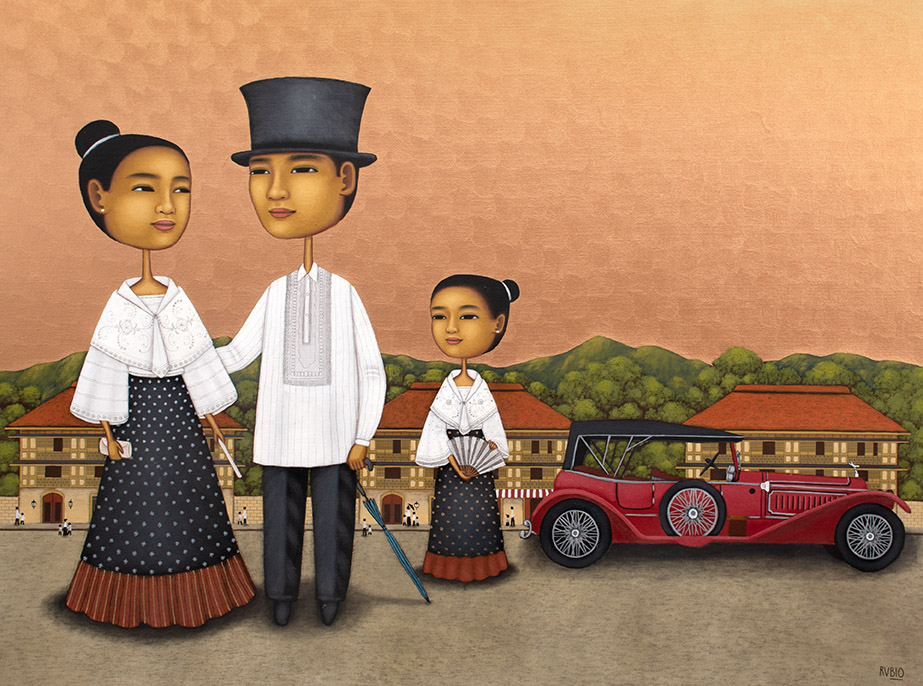
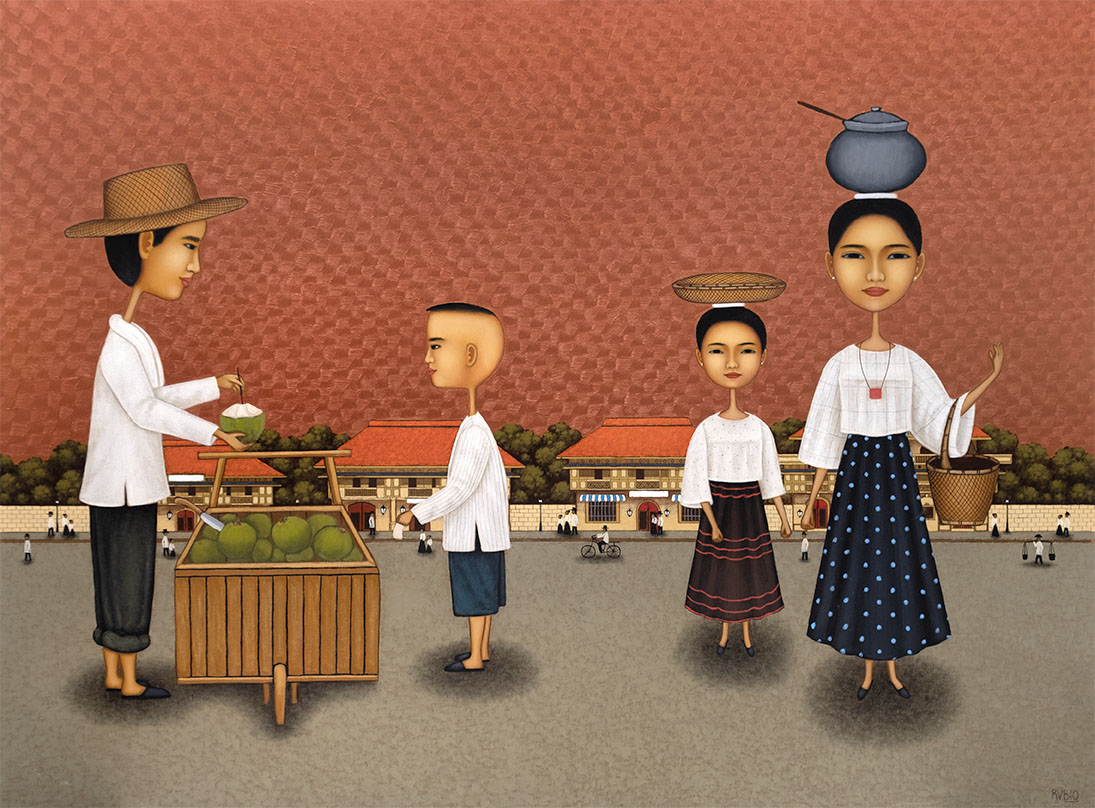

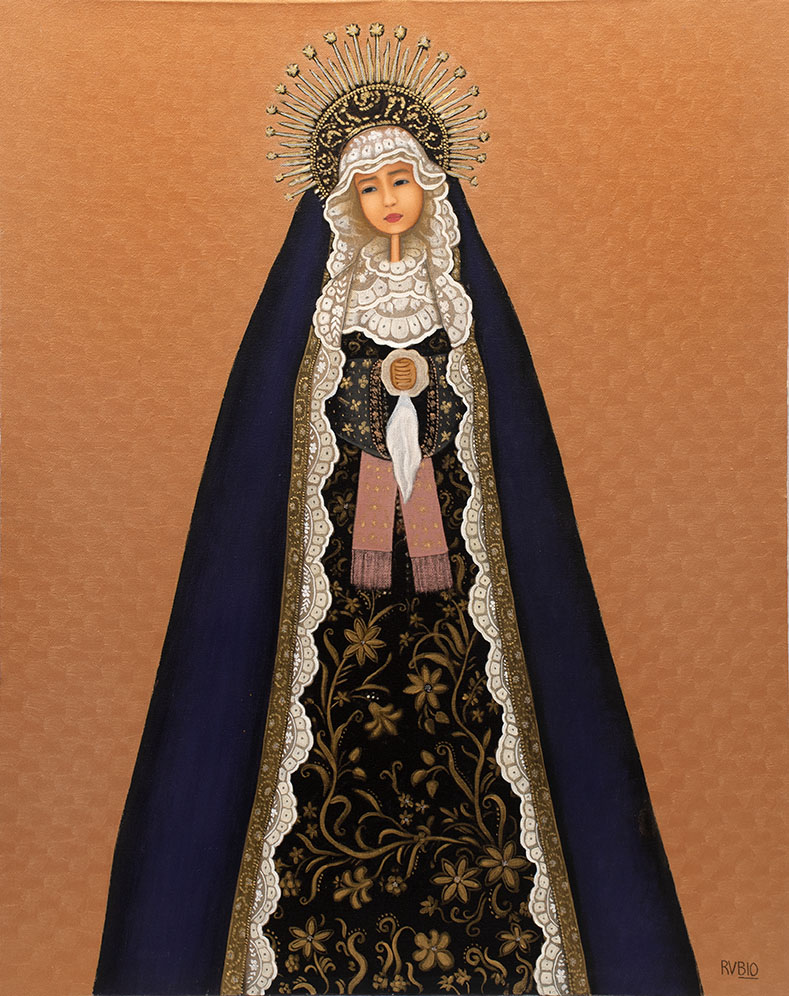
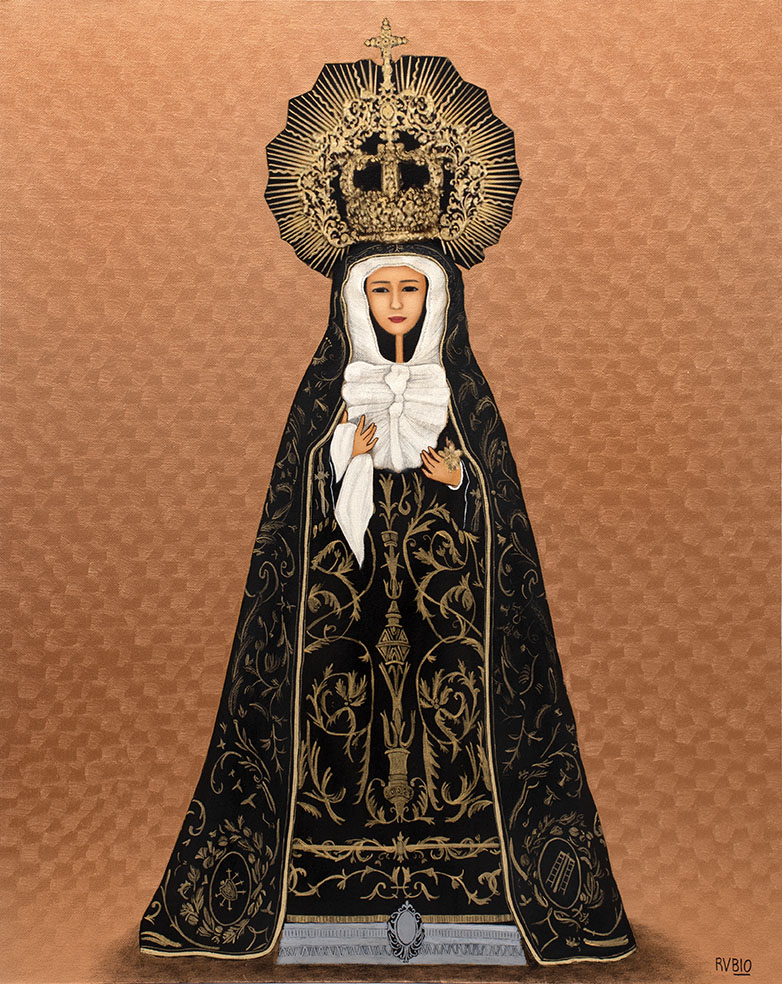

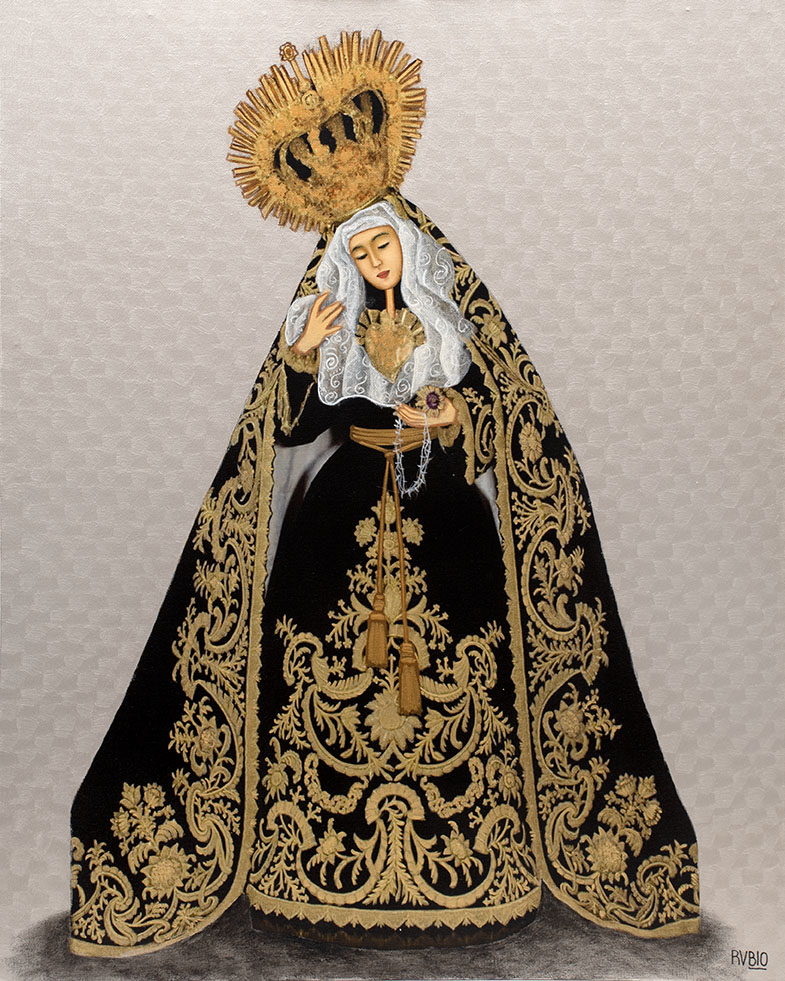

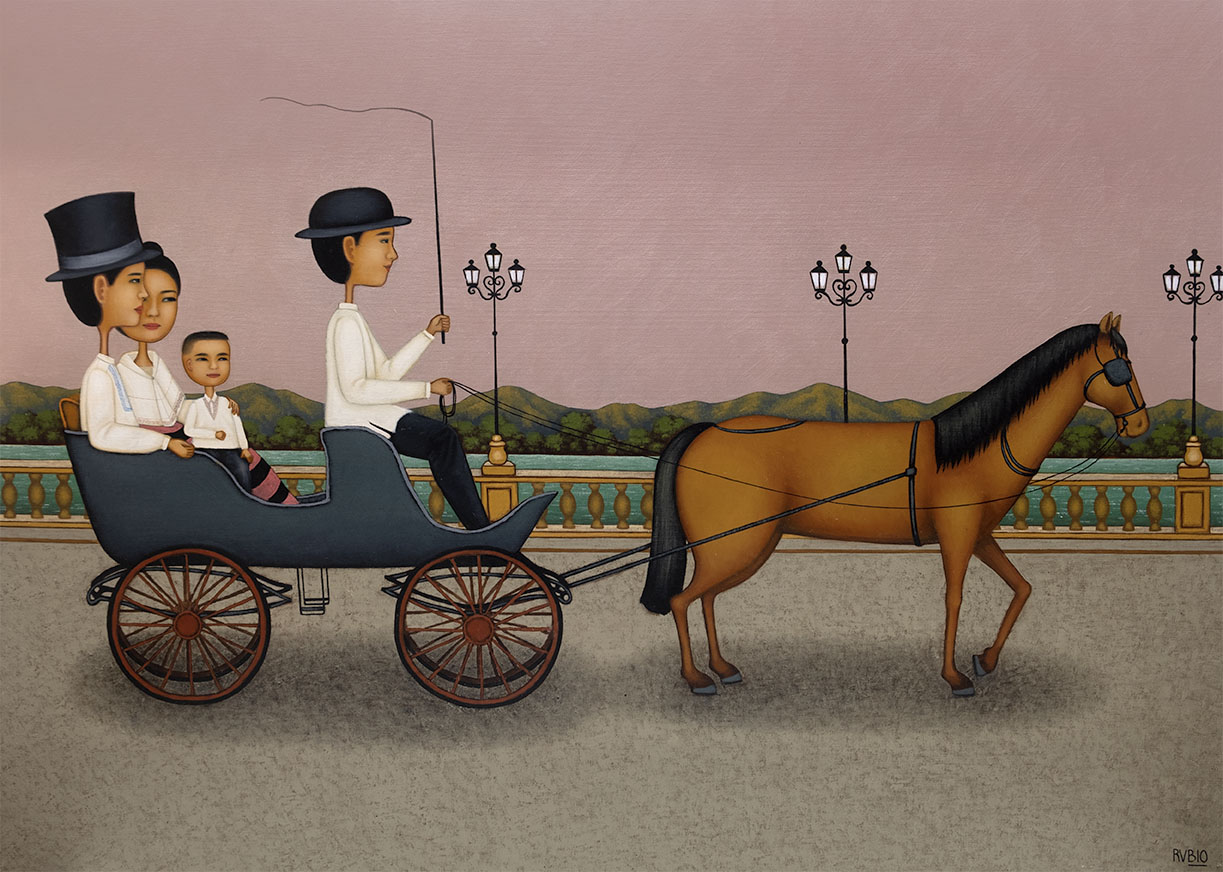
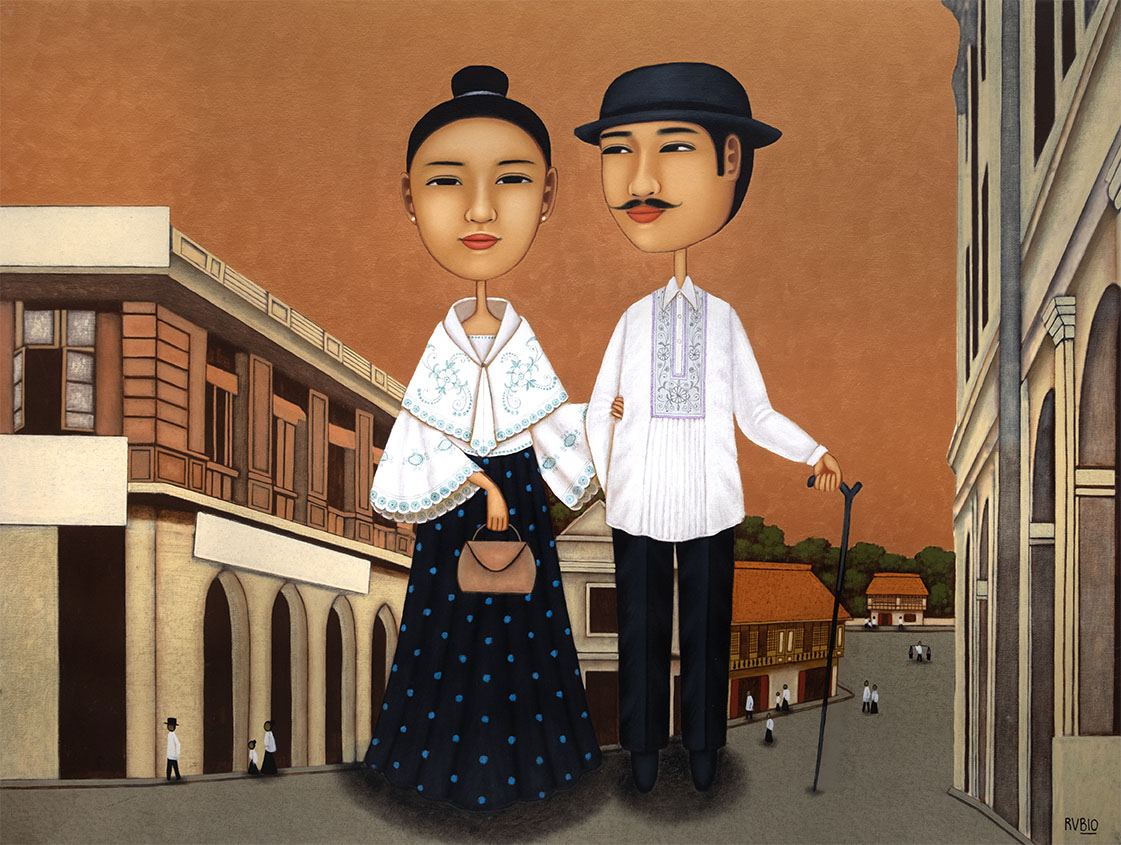
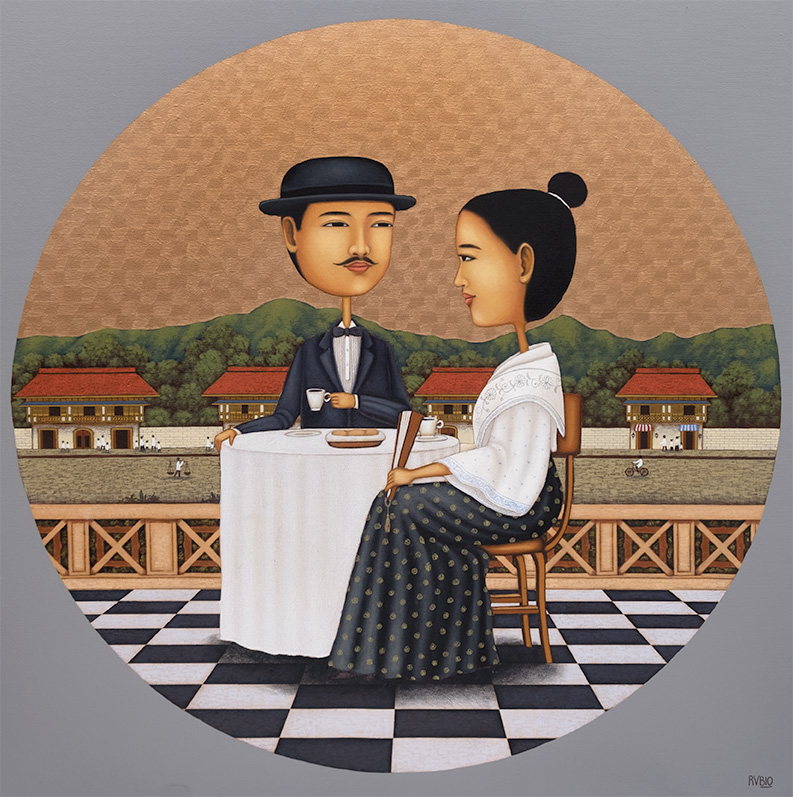
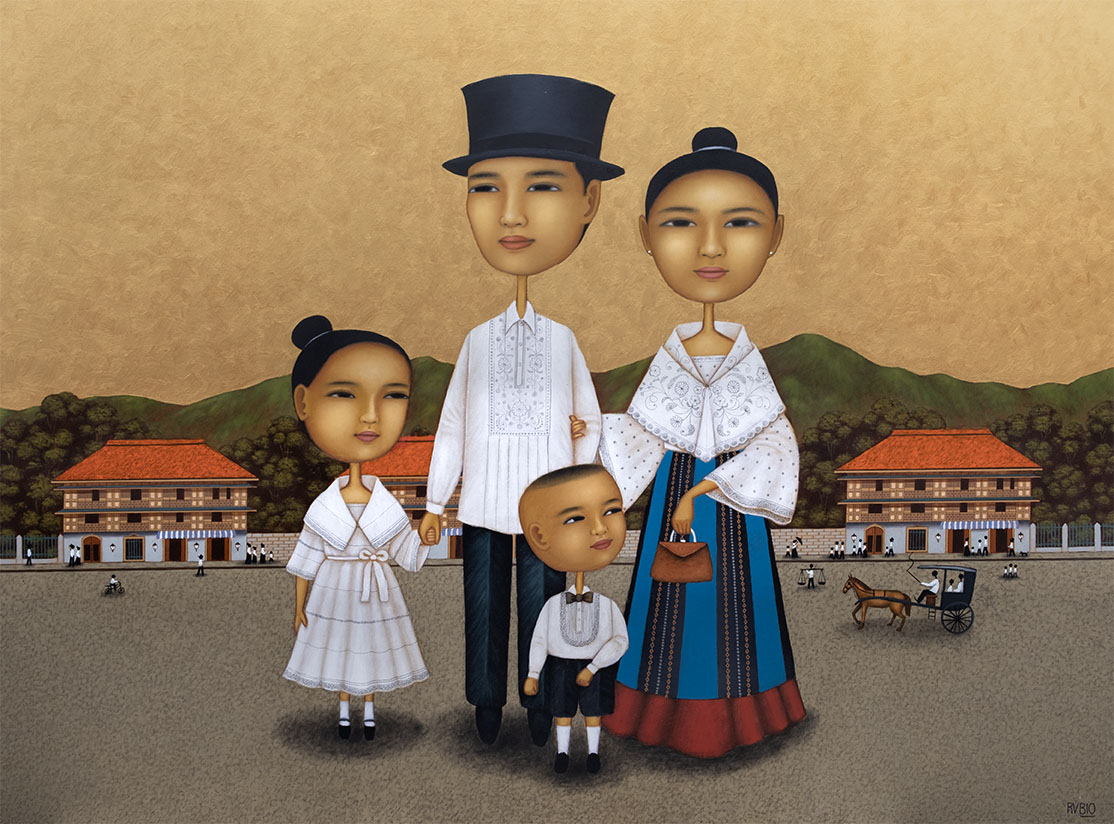

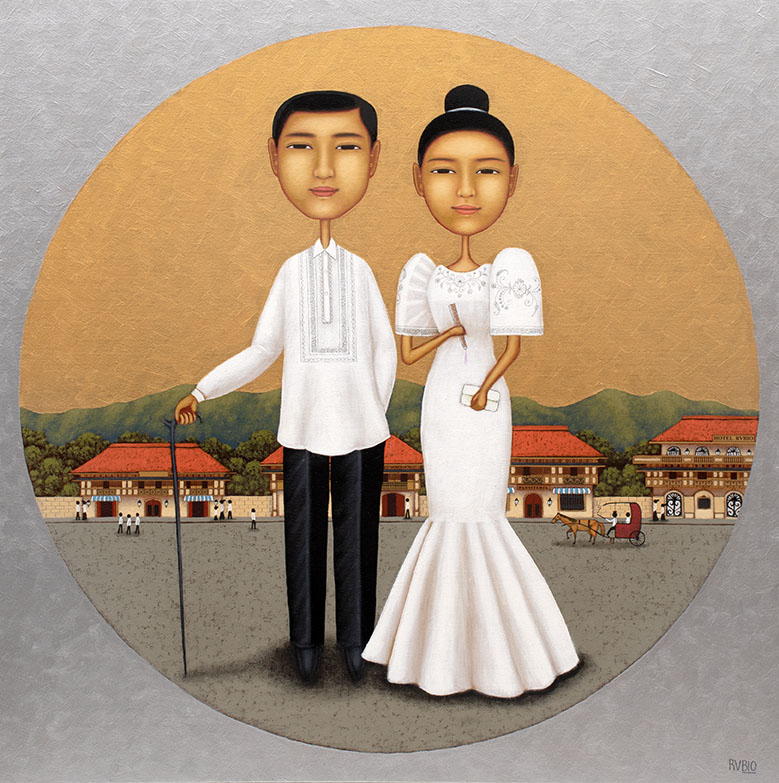
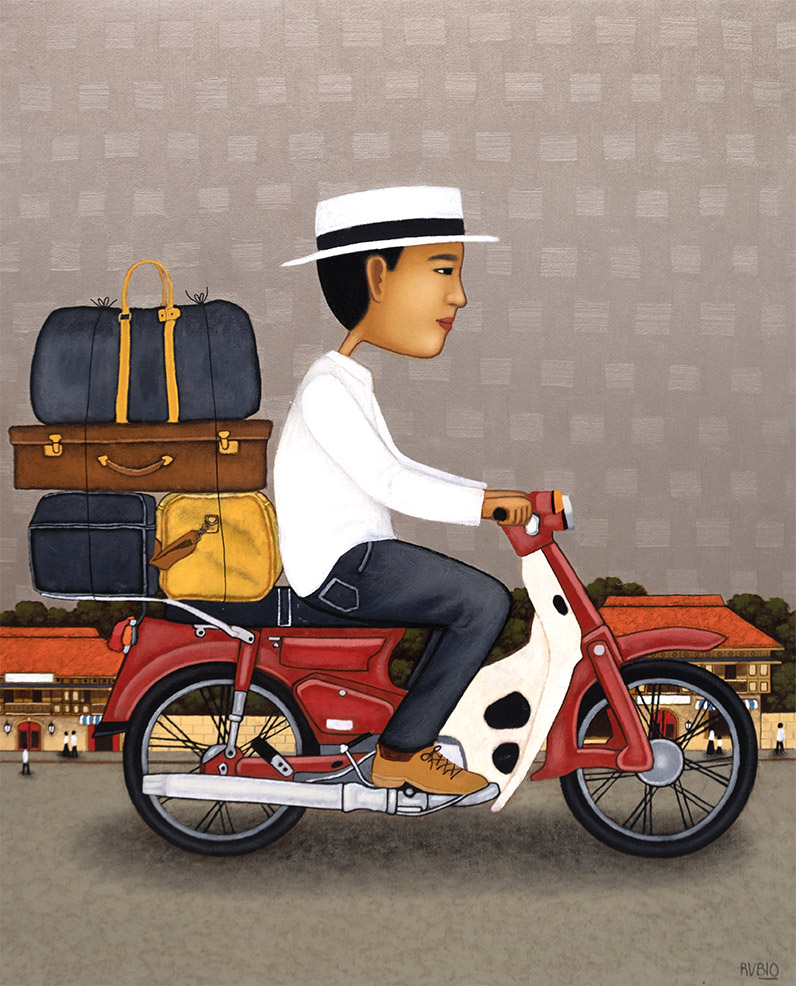
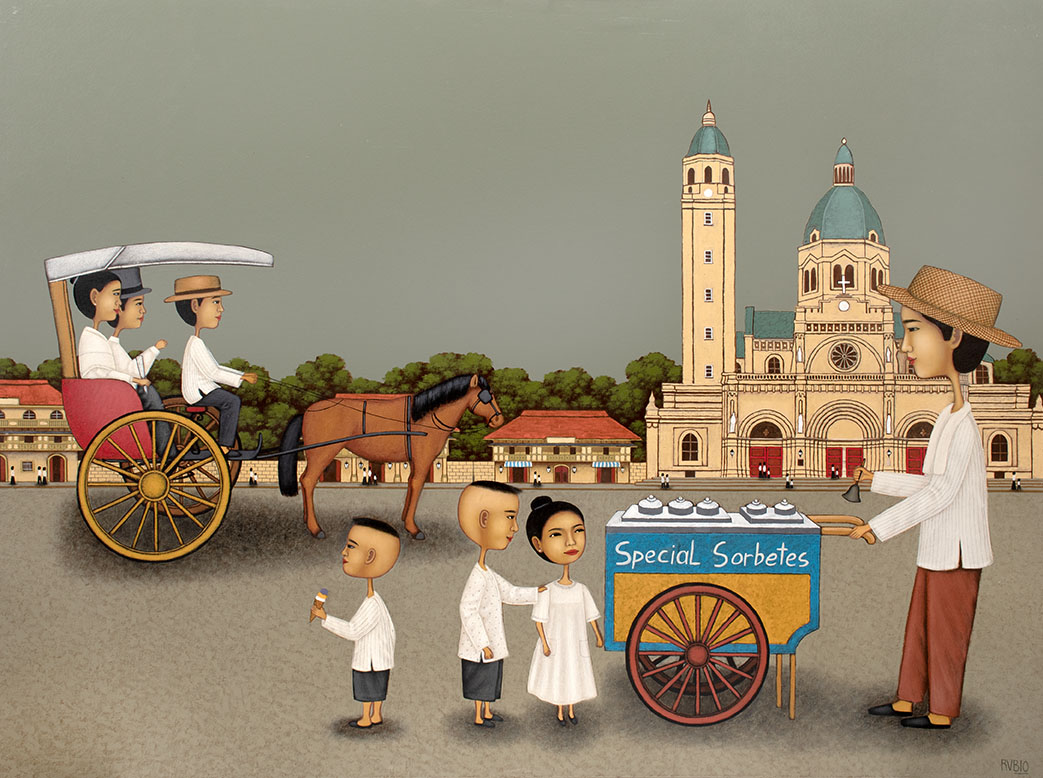
Dominic Rubio is one of the country’s most successful contemporary artist who has made a distinct mark through his appropriation of the 19th century colonial genre of tipos del pais (literally, “people of the country”, a secularized popular form of painting marking the different “types” of people who were distinguished from each other by what they wore for their profession or social status, an artistic contribution mainly by Damian Domingo, Honorato Lozano, and Justiniano Asuncion). The late eminent art critic Dr. Reuben Canete describes Rubio’s works as having “struck a deep chord of nostalgia among his public, who recollect from these paintings memories of their recent ancestry, and the nascent space of national becoming," because his successful reinterpretation of the genre highlights traditional values which resonate with core Filipino sensibilities up to this day, namely faith, love, family, simplicity, modesty, piety, industriousness, social harmony, balanced against a healthy self-assurance.
His works are of Filipinos in colonial period clothes, often situated in a town plaza, in front of a church or some other imposing architectural feature which provides mise en scene, either posed formally, squarely looking at the viewer, or in a more informal way, presented in various states of preoccupation. His subjects are depicted in a simplified manner with elongated necks and more importantly, enlarged faces, emphasizing the local idiom of “may mukhang ihaharap” or being in a state that one can face someone else with dignity and courage head on, with nothing to be ashamed of and with nothing to hide.
A good proportion of the background is in plain color to highlight the simplified subjects even more, a necessary visual and mental breather in today’s fast-paced and complicated world. Rubio successfully uses “heirarchical proportion,” a technique in which the artist uses unnatural proportion or scale to depict the relative importance of the figures in the artwork (for example, in Egyptian and classical Chinese art, figures of higher status or greater importance were often depicted as larger than surrounding people) to ensure that the focus is on the subjects, and that the values he conveys are clearly emphasized.
“Pamana” (which roughly translates to heritage or legacy, also literally, inheritance) is Dominic Rubio’s latest exhibition with Galerie Raphael, a cognate of his home gallery, Galerie Joaquin, which he has been with for the past two decades. In Pamana, Rubio presents twenty-one paintings which are consistent with his style.
Out of the twenty-one artworks presented, four are depictions of popular venerations of the Blessed Virgin Mary, nine (or the great majority) are of couples in the various degrees of courtship, around three are of families, and the rest are of happy vignettes, like children buying sorbetes (sorbet) or buko (coconut), or people at work. And though it is easy to constrain these images to the past, one work, for example, shows a man on a scooter, with various luggage, emphasizing the importance of not fixing the works to a particular period, but rather, to go by feeling, and see what the artist is emphasizing- the importance of faith as unifying ideal and as the foundation of resilience, as exemplified by the images of the Blessed Virgin Mary, the churches in the background, and the estampitas worn by women in some of the works; simplicity and modesty, as exemplified by the dresses particularly of the couples; the dignity and value of labor, in the scenes which show various people at work; and the self-confidence in having material and social achievements, as exemplified by the cars and scooters. Clearly, Pamana is the heritage of Filipinos of today who remain steadfast in the values which keep them anchored in a fast-changing and complex world. These are not necessarily anachronistic but rather a conscious attempt to remember that which persists and keeps the Filipino grounded despite the incessant changes brought by modernity.
Artist
Dominic Rubio
Venue
2/F Phase 2, U.P. Town Center, Katipunan Ave. Diliman, Quezon City